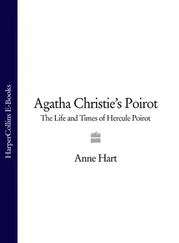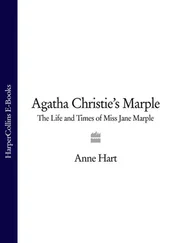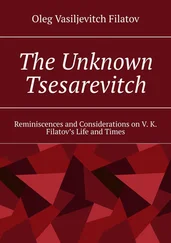To the Palestinians, their brethren of the East and of Syria, to which they had wandered under the fostering rule of the Macedono-Syrian monarchs (the Seleucidae), were indeed pre-eminently the Golah, or 'dispersion.' To them the Sanhedrin in Jerusalem intimated by fire-signals from mountain-top to mountain-top the commencement of each month for the regulation of the festive calendar, [1 Rosh. haSh. ii. 4; comp. the Jer. Gemara on it, and in the Bab. Talmud 23 b.] even as they afterwards despatched messengers into Syria for the same purpose. [2 Rosh. haSh. i. 4.] In some respects the Eastern dispersion was placed on the same footing; in others, on even a higher level than the mothercountry. Tithes and Terumoth, or first-fruits in a prepared condition, [3 Shev. vi. passim; Gitt. 8 a.] were due from them, while the Bikkurim, or first-fruits in a fresh state, were to be brought from Syria to Jerusalem. Unlike the heathen countries, whose very dust defiled, the soil of Syria was declared clean, like that of Palestine itself, [a Ohol. xxiii. 7.] So far as purity of descent was concerned, the Babylonians, indeed, considered themselves superior to their Palestinian brethren. They had it, that when Ezra took with him those who went to Palestine, he had left the land behind him as pure as fine flour, [b Kidd. 69.] To express it in their own fashion: In regard to the genealogical purity of their Jewish inhabitants, all other countries were, compared to Palestine, like dough mixed with leaven; but Palestine itself was such by the side of Babylonia. [4 Cheth. Ill a.] It was evemaintained, that the exact boundaries could be traced in a district, within which the Jewish population had preserved itself unmixed. Great merit was in this respect also ascribed to Ezra. In the usual mode of exaggeration, it was asserted, that, if all the genealogical studies and researches [5 As comments upon the genealogies from 'Azel' in 1 Chr. viii. 37 to 'Azel' in ix. 44. Pes. 62 b.] had been put together, they would have amounted to many hundred camel-loads. There was for it, however, at least this foundation in truth, that great care and labour were bestowed on preserving full and accurate records so as to establish purity of descent. What importance attached to it, we know from the action on Ezra [c Chs. ix. x.] in that respect, and from the stress which Josephus layson this point, [d Life i.; Ag Apion i. 7.] Official records of descent as regarded the priesthood were kept in the Temple. Besides, the Jewish authorities seem to have possessed a general official register, which Herod afterwards ordered to be burnt, from reasons which it is not difficult to infer. But from that day, laments a Rabbi, the glory of the Jews decreased! [6 Pes. 62 b; Sachs,Beitr. vol. ii. p. 157.]
Nor was it merely purity of descent of which the Eastern dispersion could boast. In truth, Palestine owed everything to Ezra, the Babylonian, [1 According to tradition he returned to Babylon, and died there. Josephus says that he died in Jerusalem (Anti. xi. 5. 5).] a man so distinguished that, according to tradition, the Law would have been given by him, if Moses had not previously obtained that honor. Putting aside the various traditional ordinances which the Talmud ascribes to him, [2 Herzfeld has given a very clear historical arrangement of the order in which, and the persons by whom, the various legal determinations were supposed to have been given. See Gesch. d. V. Isr. vol. iii. pp. 240 &c] we know from the Scriptures what his activity for good had been. Altered circumstances had brought many changes to the new Jewish State. Even the language, spoken and written, was other than formerly. Instead of the characters anciently employed, the exiles brought with them, on their return, those now common, the so-called square Hebrew letters, which gradually came into general use. [a Sanh. 21 b.] [3 Although thus introduced under Ezra, the ancient Hebrew characters, which resemble the Samaritan, only very gradually gave way. They are found on monuments and coins.] The language spoken by the Jews was no longer Hebrew, but Aramaean, both in Palestine and in Babylonia; [4 Herzfeld (u. s. vol. iii. p. 46) happily designates the Palestinian as the Hebraeo-Aramaic, from its Hebraistic tinge. The Hebrew, as well as the Aramaean, belongs to the Semitic group of languages, which has thus been arranged: 1. North Semitic: Punico-Phoenician, Hebrew, and Aramaic (Western and Eastern dialects). 2. South Semitic: Arabic, Himyaritic, and Ethipian. 3. East Semitic: The Assyro-Baylonian cuneiform. When we speak of the dialect used in Palestine, we do not, of course, forget the great influence of Syria, exerted long before and after the Exile. Of these three branches the Aramaic is the most closely connected with the Hebrew. Hebrew occupies an intermediate position between the Aramaic and the Arabic, and may be said to be the oldest, certainly from a literary point of view. Together with the introduction of the new dialect into Palestine, we mark that of the new, or square, characters of writing. The Mishnah and all the kindred literature up to the fourth century are in Hebrew, or rather in a modern development and adaptation of that language; the Talmud is in Aramaean. Comp. on this subject: DeWette-Schrader, Lehrb. d. hist. kr. Eink. (8 ed.) pp. 71-88; Herzog's Real-Encykl. vol. i. 466, 468; v. 614 &c, 710; Zunz, Gottesd. Vortr. d. Jud. pp. 7-9; Herzfeld, u.s. pp. 44 &c, 58&c] in the former the Western, in the latter the Eastern dialect. In fact, the common people were ignorant of pure Hebrew, which henceforth became the language of students and of the Synagogue. Even there a Methurgeman, or interpreter, had to be employed to translate into the vernacular the portions of Scripture read in the public services, [5 Could St. Paul have had this in mind when, in referring to the miraculous gift of speaking in other languages, he directs that one shall always interpret (1 Cor. xiv. 27)? At any rate, the word targum in Ezra iv. 7 is rendered in the LXX. by The following from the Talmud (Ber. 8 a and b) affords a curious illustration of 1 Cor. xiv. 27: 'Let a man always finish his Parashah (the daily lesson from the Law) with the congregation (at the same time), twice the text, and once targum.']. and the address delivered by the Rabbis. This was the origin of the so-called Targumim, or paraphrases of Scripture. In earliest times, indeed, it was forbidden to the Methurgeman to read his translation or to write down a Targum, lest the paraphrase should be regarded as of equal authority with the original. It was said that, when Jonathan brought out his Targum on the Prophets, a voice from heaven was heard to utter: 'Who is this that has revealed My secrets to men?' [a Megill. 3.] Still, such Targumim seem to have existed from a very early period, and, amid the varying and often incorrect renderings, their necessity must have made itself increasingly felt. Accordingly, their use was authoritatively sanctioned before the end of the second century after Christ. This is the origin of our two oldest extant Targumim: that of Onkelos (as it is called), on the Pentateuch; and that on
the Prophets, attributed to Jonathan the son of Uzziel. These names do not, indeed, accurately represent the authorship of the oldest Targumim, which may more correctly be regarded as later and authoritative recensions of what, in some form, had existed before. But although these works had their origin in Palestine, it is noteworthy that, in the form in which at present we possess them, they are the outcome of the schools of Babylon.
But Palestine owed, if possible, a still greater debt to Babylonia. The new circumstances in which the Jews were placed on their return seemed to render necessary an adaptation of the Mosaic Law, if not new legislation. Besides, piety and zeal now attached themselves to the outward observance and study of the letter of the Law. This is the origin of the Mishnah, or Second Law, which was intended to explain and supplement the first. This constituted the only Jewish dogmatics, in the real sense, in the study of which the sage, Rabbi, scholar, scribe, and Carshan, [1 From darash, to search out, literally, to tread out. The preacher was afterwards called the Darshan.] were engaged. The result of it was the Midrash, or investigation, a term which afterwards was popularly applied to commentaries ont he Scriptures and preaching. From the outset, Jewish theology divided into two branches: the Halakhah and the Haggadah. The former (from halakh, to go) was, so to speak, the Rule of the Spiritual Road, and, when fixed, had even greater authority than the Scriptures of the Old Testament, since it explained and applied them. On the other hand, the since it explained and applied them. On the other hand, the Haggadah [2 The Halakhah might be described as the apocryphal Pentateuch, the personal saying of the teacher, more or less valuable according to his learning and popularity, or the authorities which he could quote in his support. Unlike the Halakhah, the Haggadah had no absolute authority, either as to doctrine practice, or exegesis. But all the greater would be its popular influence, [1 We may here remind ourselves of 1 Tim. v. 17. St. Paul, as always, writes with the familiar Jewish phrases ever recurring to his mind. The expression seems to be equivalent to Halakhic teaching. Comp. Grimm, Clavis N. T. pp. 98, 99.] and all the more dangerous the doctrinal license which it allowed. In fact, strange as it may sound, almost all the doctrinal teaching of the Synagogue is to be derived from the Haggadah and this also is characteristic of Jewish traditionalism. But, alike in Halakhah and Haggadah, Palestine was under the deepest obligation to Babylonia. For the father of Halakhic study was Hillel, the Babylonian, and among the popular Haggadists there is not a name better known than that of Eleazar the Mede, who flourished in the first century of our era.
Читать дальше












